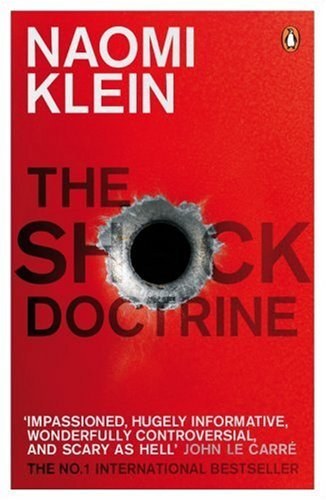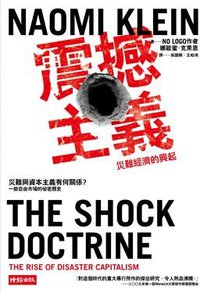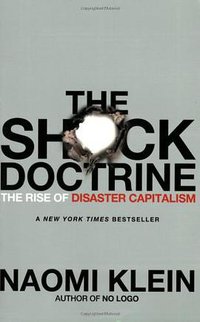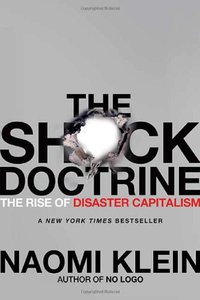The Shock Doctrine
豆瓣
The Rise of Disaster Capitalism
Naomi Klein
简介
Around the world in Britain, the United States, Asia and the Middle East, there are people with power who are cashing in on chaos; exploiting bloodshed and catastrophe to brutally remake our world in their image. They are the shock doctors. Thrilling and revelatory, "The Shock Doctrine" cracks open the secret history of our era. Exposing these global profiteers, Naomi Klein discovered information and connections that shocked even her about how comprehensively the shock doctors' beliefs now dominate our world - and how this domination has been achieved. Raking in billions out of the tsunami, plundering Russia, exploiting Iraq - this is the chilling tale of how a few are making a killing while more are getting killed.
contents
Part 1 begins with a chapter on psychiatric shock therapy and the covert experiments conducted by the psychiatrist Ewen Cameron in collusion with the Central Intelligence Agency: how it was partially successful in distorting and regressing patients' original personality, but ineffectual in developing a better personality to replace it. Parallels with economic shock therapy are made, including a digression on how government agencies harnessed some of the lessons learned to create more effective torture techniques. Torture, according to Klein, has often been an essential tool for authorities who have implemented aggressive free market reforms – this assertion is stressed throughout the book. She suggests that for historical reasons the human rights movement has often portrayed torture without explaining its context, which has made it frequently appear as pointless sadism. The second chapter introduces Milton Friedman and his Chicago school of economics, who Klein describes as leading a movement committed to free markets even less regulated than before the Great Depression.
Part 2 discusses the use of shock doctrine to transform South American economies in the 1970s, focusing on the coup in Chile led by General Augusto Pinochet. The apparent necessity for the unpopular policies associated with shock therapy to be supported by torture is explored.
Part 3 covers attempts to apply the shock doctrine without the need for extreme violence against sections of the population. The mild shock therapy of Margaret Thatcher is explained as being made possible by the Falklands War, while free-market reform in Bolivia was possible due to a combination of pre-existing economic crises and the charisma of Jeffrey Sachs.
Part 4 reports on how the shock doctrine was applied in Poland, Russia, South Africa and to the tiger economies during the 1997 Asian financial crisis.
Part 5 introduces the Disaster Capitalism Complex where the author describes how companies have learnt to profit from disasters. She talks about how the same personnel move easily from security-related posts in US government agencies to lucrative positions in corporations.
Part 6 discusses the occupation of Iraq, which Klein describes as the most comprehensive and full-scale implementation of the shock doctrine ever attempted.
Part 7 is about the winners and losers of economic shock therapy, how narrow groups will often do very well by moving into luxurious gated communities while large sections of the population are left with decaying public infrastructure, declining incomes and increased unemployment.
Conclusion is about the backlash against the shock doctrine and economic institutions that propagate it like the World Bank and IMF. South America and Lebanon post-2006 are examined as sources of positive news, where politicians are already rolling back free-market policies, with some mention of the increased campaigning by community-minded activists in South Africa and China.
---From Wiki



